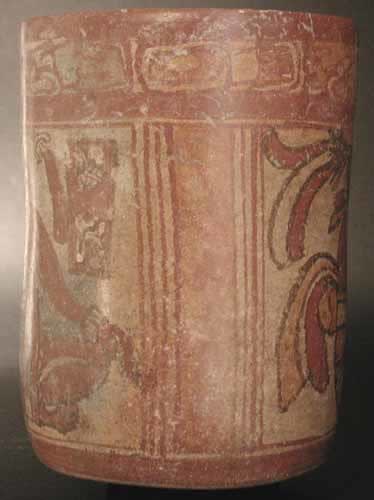Mayan Polychrome Cylindrical Vessel, 500 CE - 900 CE
Terracotta
6.5
PF.2906
Further images
Much of Mayan art was dedicated to the glorification of their great kings, priests, gods, and to their remarkable concept of time. Although portions of their iconographic meanings are still...
Much of Mayan art was dedicated to the glorification of their great kings, priests, gods, and to their remarkable concept of time. Although portions of their iconographic meanings are still somewhat ambiguous, much is known today about the techniques of these masterful craftsmen. This polychrome cylinder vessel reveals the characteristic pictorial methods used by the artists. Brushes, much like those of the Chinese were used for the line work in painting as well as writing. In fact, the line work of the Mayan vessels clearly rivals that of the Chinese as one of the world's greatest calligraphic traditions. This vessel has a band of pictorial symbols below its rim, and depicts two seated men each facing a glyphic inscription. The similarity of these two figures indicates a relationship between the two. The larger man bears a menacing expression, and is dressed in a patterned wrap-cloth and an elaborate headdress. The other figure, who is smaller and more youthful, wears a less elaborate version of the same costume, and bears the same fierce expression. These may be representing the dominant lord and his son, possibly documenting the line of royal succession. In Mayan art, stylization of figures and their costumes often incorporated symbolic shapes echoing those of the Mayan written language. Through this manner of stylization and the addition of text, Mayan vessels were able to carry a great deal of politico-religious meaning.
Literature
V14







